Cream of Tartar – Versatile Kitchen Chemical
CREAM OF TARTAR
Cream of Tartar is a very useful and versatile chemical for your kitchen. My hope is that through this article you will gain a greater appreciation of it and how its presence in your kitchen ads value to your efforts and the products you make with it.
ORIGINS
Records of the use of Cream of Tarter extend as far back as 7,000 years. The Archaeological Instutute of America reported in the September/October 1996 edition of its Journal that “Patrick E. McGovern and a team from the University of Pennsylvania Museum found calcium salt from tartaric acid, which occurs naturally in large amounts only in grapes,” at a Neolithic village site in Iran, indicating that wine was being produced in that region of the world at that early date. You can read the full article here.
CHEMISTRY
Cream of Tartar is obtained as a by product of wine manufacture by extracting it from a crystal that is deposited on the inside of wine barrels as the wine ferments. The chemical names for it are: potassium tartrate, potassium hydrogen tartrate, and potassium bitartrate. Its molecular formula is KHC4H5O6.
COOKING
Cream of Tartar has many uses in the kitchen, including:
Baking Powder – Cream of tartar can be used to make baking powder by combing 2 parts Cream of Tartar with 1 part Baking Soda and 1 part Cornstarch.
Meringue – Cream of Tartar, due to its acidity, can be used to stabilize and add volume to beaten egg whites such as are used in angel food cake, pie meringue and meringue cookies. As egg whites are beaten, they expand in volume. The beating of the egg whites causes the strands of egg protein to partially unfold and connect with each other. These interconnected strands wrap around air bubbles which leads to foam development. Cream of tartar lowers the pH of egg whites and helps neutralize the tendency of proteins to repel each other; encouraging their connection. This helps support the air bubbles formed by beating. The result is a much more stable foam.
Snickerdoodles – This famous cookie has the characteristics it does because of the use of Cream of Tartar. See recipe below.*
Icing and Candy – Cream of Tartar is used in icing and candy recipes because it helps produce a product that is smoother and creamier.
Syrup – Adding Cream of Tartar helps prevent crystallization of syrup and honey.
Color Preservation in Vegetables – Boiling vegetables causes them to lose their pigmentation and therefore lose much of their visual appeal. Adding Cream of Tartar to the water helps prevent this. Because of its acidity, Cream of Tartar also helps retard browning of vegetables and cut fruit. However, care must be taken so that the amount of Cream of Tartar used does not affect the flavor of the produce.
However, I tried an experiment comparing boiling broccoli in a Cream of Tartar solution with my standard steam method. I’ll let you be the judge of which method produces the most appealing results:
CLEANING
Cream of Tartar can be used to clean your pots and pans as well, particularly aluminum and copper. It can also help take stains out of fabrics such as kitchen towels & aprons, and aid in cleaning your porcelain sink.
TOOTH WHITENING
Although I have not tried it (yet), there are articles about how Cream of Tartar can be used even to whiten teeth. If true, this is of particular help to cooks after years of drinking hot coffee & tea and sipping wine.
PLAY CLAY
Cream of Tartar can be used along with other items from your kitchen to make modeling clay.
1 cup flour
1 cup water
1 cup salt
1 tablespoon vegetable oil
1 tablespoon cream of tartar
3-5 drops of food dye (various colors)
* Snickerdoodles
This recipe comes from the McCormick website.
Ingredients
2 3/4 c Flour, all purpose
2 t Cream of Tartar
1 t Baking Soda
1 1/2 c Sugar, divided
1/2 c Butter, softened
1/2 c Shortening
2 Eggs
2 t Vanilla
1/4 c Sugar
1 T Cinnamon, Ground
Instructions
1. Mix flour, cream of tartar and baking soda in large bowl. Set aside. Beat 1 1/2 cups sugar, butter and shortening in large bowl with electric mixer on medium speed until light and fluffy. Add eggs and vanilla; mix well. Gradually beat in flour mixture on low speed until well mixed. Refrigerate 1 hour.
2. Preheat oven to 400°F. Mix 1/4 cup sugar and cinnamon. Shape dough into 1-inch balls.
Roll in cinnamon sugar mixture to coat. Place 2 inches apart on baking sheets.
3. Bake 9 to 11 minutes or until lightly browned. Cool on baking sheets 1 minute. Remove to wire racks;
cool completely.
——————–
If you are looking for a place to purchase Cream of Tartar in bulk you might want to check Penzey’s


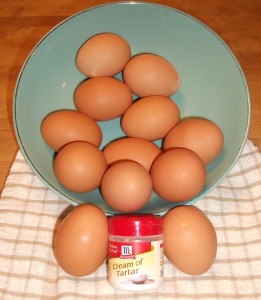
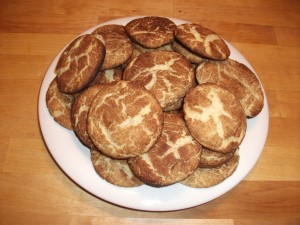
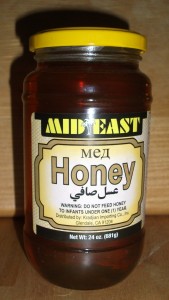
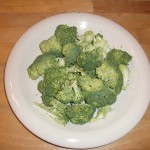
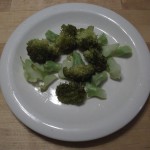
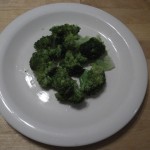
Pingback: Snickerdoodle Disaster | Lukewarm Legumes()